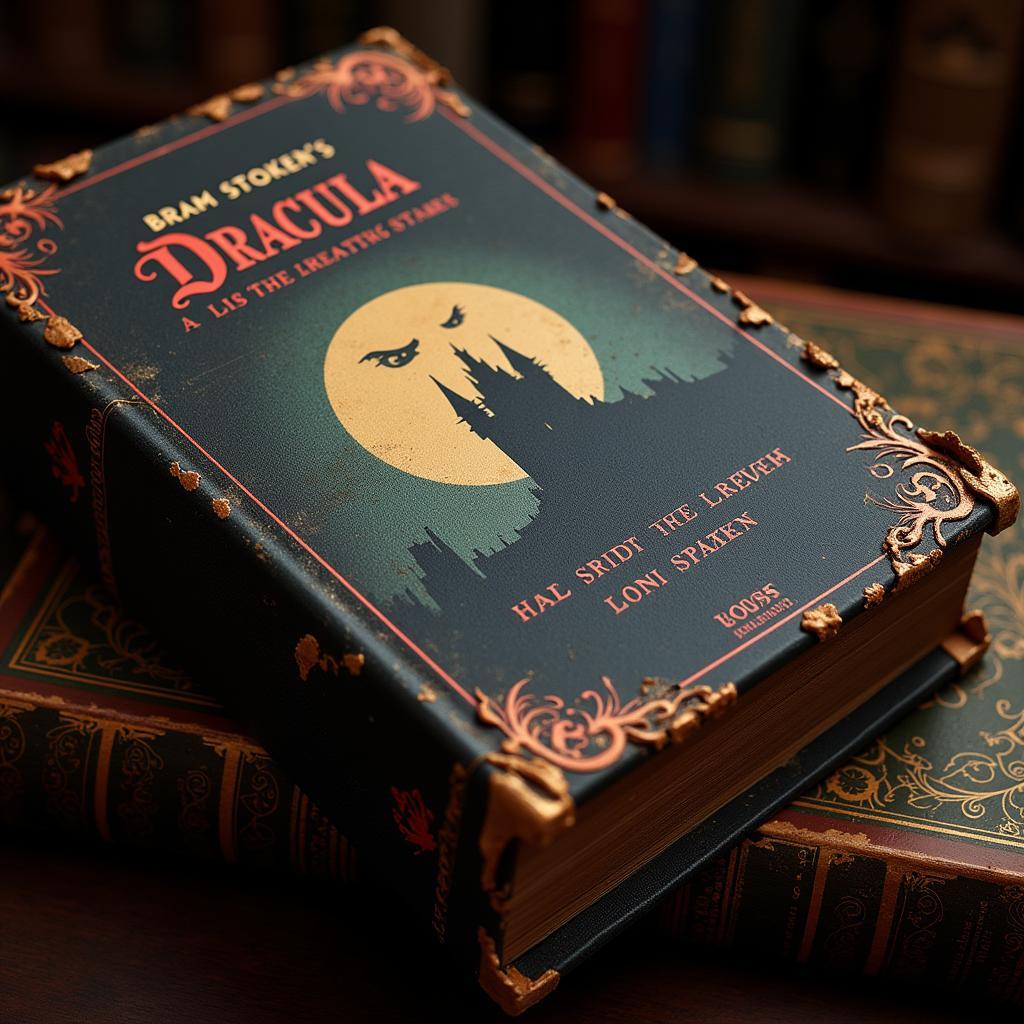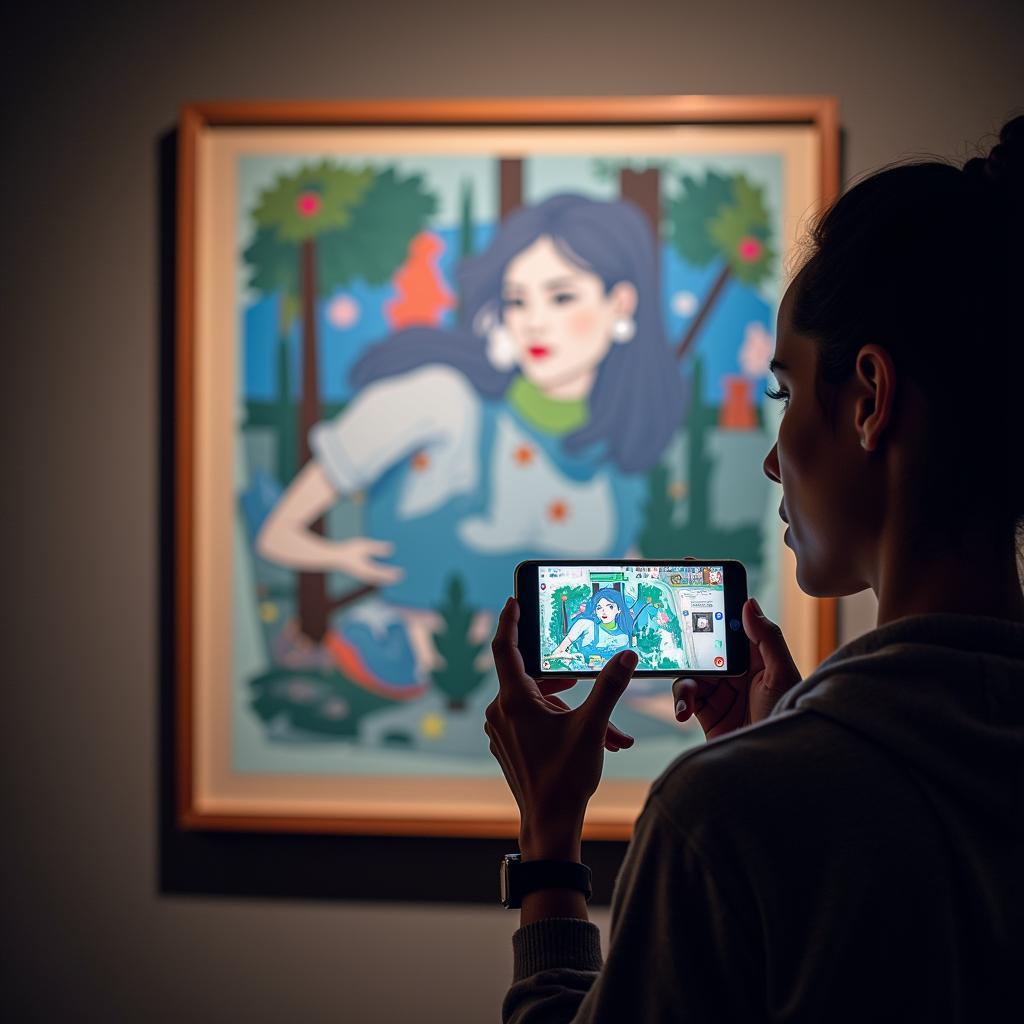Bicycle Day Blotter Art: A Psychedelic Fusion of Art and Chemistry
Bicycle Day Blotter Art, a vibrant subgenre of psychedelic art, has captivated collectors and enthusiasts for decades. This unique art form finds its expression on tiny squares of absorbent paper, better known as blotter paper, originally used to dispense doses of LSD. While the association with LSD is undeniable, bicycle day blotter art transcends its functional origins, evolving into a captivating blend of art, counterculture, and intricate design.
Exploring the Origins of Bicycle Day Blotter Art
The term “Bicycle Day,” celebrated annually on April 19th, commemorates Swiss chemist Albert Hofmann’s groundbreaking bicycle ride home after intentionally ingesting LSD for the first time in 1943. This pivotal moment in psychedelic history inadvertently laid the foundation for the emergence of blotter art in the 1960s.
As LSD’s presence in the counterculture movement grew, so did the need for discreet and easily transportable distribution methods. Blotter paper, capable of absorbing and preserving LSD, emerged as the preferred medium. Initially, blotter paper was unadorned and purely functional. However, the creative spirit of the psychedelic era soon took hold, transforming these tiny squares into miniature canvases for artistic expression.
The Rise of a Psychedelic Canvas
By the late 1960s, artists and underground chemists began to see the artistic potential of blotter paper. Simple designs like dots and abstract patterns gave way to increasingly intricate and imaginative artwork. Popular motifs included psychedelic imagery, pop culture references, and intricate geometric patterns, often rendered in vibrant, eye-catching colors.
The creation of blotter art was often a clandestine affair. Artists, working with rudimentary tools and techniques, employed everything from hand-drawn designs and rubber stamps to silkscreens and printing presses. The resulting artwork, often produced in limited runs, became highly collectible, serving as miniature artifacts of a transformative cultural movement.
Beyond Function: Blotter Art as Fine Art
While blotter art’s origins are intertwined with the illicit drug trade, its artistic value has increasingly gained recognition. Museums and galleries have begun to feature blotter art in exhibitions exploring psychedelic art and counterculture movements.
What makes blotter art unique?
Several factors contribute to the allure and artistic merit of blotter art:
- Miniature Scale and Intricacy: The small size of blotter art, typically a square centimeter, demands incredible precision and artistry. The intricate details and vibrant colors, often best appreciated under magnification, showcase the skill and creativity of the artists.
- Cultural Significance: Blotter art serves as a visual time capsule, reflecting the aesthetics, ideologies, and anxieties of the psychedelic era and its aftermath. The imagery and symbolism embedded within these miniature artworks offer valuable insights into the cultural landscape of the time.
- Anonymity and Mystery: The clandestine nature of blotter art production often shrouds the identities of the artists in mystery. This anonymity adds to the allure, encouraging viewers to engage with the art on its own terms, free from preconceived notions about the artist’s background or intentions.
The Legacy and Future of Bicycle Day Blotter Art
Blotter art, while still associated with its controversial past, has transcended its functional origins to become a recognized form of psychedelic art. Contemporary artists continue to explore the medium, pushing the boundaries of creativity within its miniature canvas.
As we celebrate Bicycle Day and reflect on the enduring legacy of LSD, it’s essential to acknowledge the artistic expressions it inspired. Blotter art, born from a convergence of chemistry, art, and counterculture, continues to captivate and intrigue, reminding us of the potent interplay between creativity, consciousness, and the human desire for self-expression.
FAQs about Bicycle Day Blotter Art
1. Is blotter art legal?
The legality of blotter art varies depending on its intended use and local laws. Possessing blank blotter art is generally legal, but selling or distributing it with the intent for illegal drug use is not.
2. How is blotter art created?
Blotter art is created using various printing techniques, including hand-drawing, rubber stamps, silkscreens, and even offset printing. The designs are applied to sheets of absorbent paper treated with chemicals that facilitate the absorption and preservation of substances like LSD.
3. Where can I see blotter art?
Blotter art can be found in various places, including online galleries, private collections, and occasionally in museum exhibitions dedicated to psychedelic art or counterculture movements.
Need help exploring the world of bicycle day blotter art?
Contact us! Our team at Online Art workshops is available 24/7 to assist you.
Phone: 02462573573
Email: [email protected]
Address: Savico Megamall, 7-9 Đ. Nguyễn Văn Linh, Gia Thụy, Long Biên, Hà Nội 10000, Việt Nam.



